Starting a garden in containers is an excellent solution for those with limited yard space. If done correctly, container vegetable gardens can significantly boost your harvests. You may want to experiment with container gardening even if you have an existing yard. Let’s find out more information about Canada container gardening below.
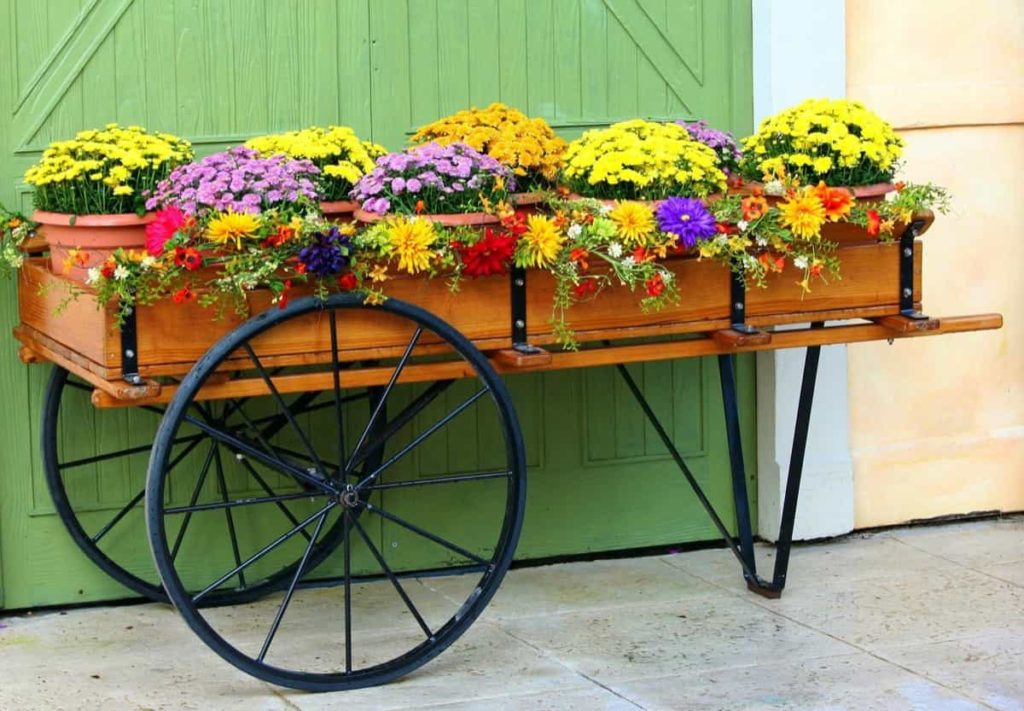
With container gardening, you can grow a wide variety of plants quickly, making it a popular choice for both homeowners and those living in high-rises. In addition, container gardening provides a wide range of options for big and small gardens. Plants can instantly brighten a garden, serve as a focal point, or connect the house’s design to the garden.
On a deck or patio, a set of matching pots on each side of the walkway acts as a welcome décor, while container gardening can offer color and serenity. In this post, we have discussed container gardening for beginners in Canada and the best home garden plants to grow, including fruits, vegetables, flowers, and herbs, for your home garden. This post will help you grow various plants successfully in containers in Canada.
Hardiness zones of Canada
The most recent version of the Canadian map is similar to the most recent version of the USDA map. Information like maximum wind speed, summer rainfall, maximum temperatures, winter snow cover, and other factors are considered in creating the current Canadian hardiness map. In addition, Canadian hardiness zones are further subdivided into 2a and 2b or 6a and 6b, making the information more specific.
There are nine distinct growing zones in Canada, ranging in severity from 0 to 8. The zones are as exact as possible, but you should consider any microclimates even in your garden. A slight change can make or break a plant or garden. Nearby bodies of water, slopes, concrete, asphalt, brick, soil type, vegetation, or constructions may all impact microclimates.
Since USDA zone 9 is the northernmost point where crops can be grown successfully in Canada, Canadian hardiness zone recommendations only go up to USDA zone 9. In addition, it is the hottest in British Columbia and Vancouver Island, whereas the northern territories have the coldest climates, allowing fewer plant species to flourish.
There are certain complexities to consider when using USDA zones in Canada, but gardeners could add one zone to the USDA zone as a general rule. For example, zone 4 in the USDA is essentially equivalent to Zone 5 in Canada. Because this simple approach isn’t backed by science, it’s best to stay inside the planting zone if you have any doubts. So much grief and money can be spared by just placing your plants one zone higher up in the hierarchy.
Canada container Gardening: Step by steps
Choose an ideal location for your containers
When putting up a container garden, you first need to choose where to put the arrangement. Is it in the shade or the direct sunlight? Is there a convenient way to get water? Is there a lot of wind there? Answering these questions will help you identify plants that flourish in this environment. For instance, you wouldn’t want to put plants that need full light in the shadow or a flower with fragile petals in a position with a lot of wind.
Choose the ideal containers
Even though seasoned gardeners would tell you that any container will do, the truth is that some materials, particularly for new gardeners, are more straightforward to deal with than others. Although it is advantageous due to its low weight, low-quality plastic may degrade when exposed to sunlight and was not designed to survive for a long time. Terracotta containers are more durable, but they often need additional watering since they dry up so quickly.
If you choose this option, drain holes must be drilled in the bottom of glazed ceramic pots. Additionally, it is advised that you use big containers to do not need to water continuously. Finding containers that are suitable for your purposes might be challenging, but you should enjoy the process of experimentation.
Select your potting mix for growing plants in containers
Sand, vermiculite, and perlite are all great for maintaining a soil’s lightness and drainage. The addition of peat to soil allows it to hold water more effectively. If you want your plant to develop healthily, you should choose a mixture with the optimal drainage and water retention balance. You can utilize the soil from your garden, but if it has a high concentration of nutrients, your plants will not do well in it. You could furthermore have to fight weeds.
Select bagged soil or a soilless mix that has been prepared specifically for containers for the best possible outcomes. Changing the soil on your plants every year can protect them from infectious diseases and provide them with the finest possible environment in which to thrive. Some mixtures include water-retaining soil additives that will saturate themselves with water before gradually releasing it into the ground.
In case you missed it: Growing Vegetables In Canada, Planting Calendar
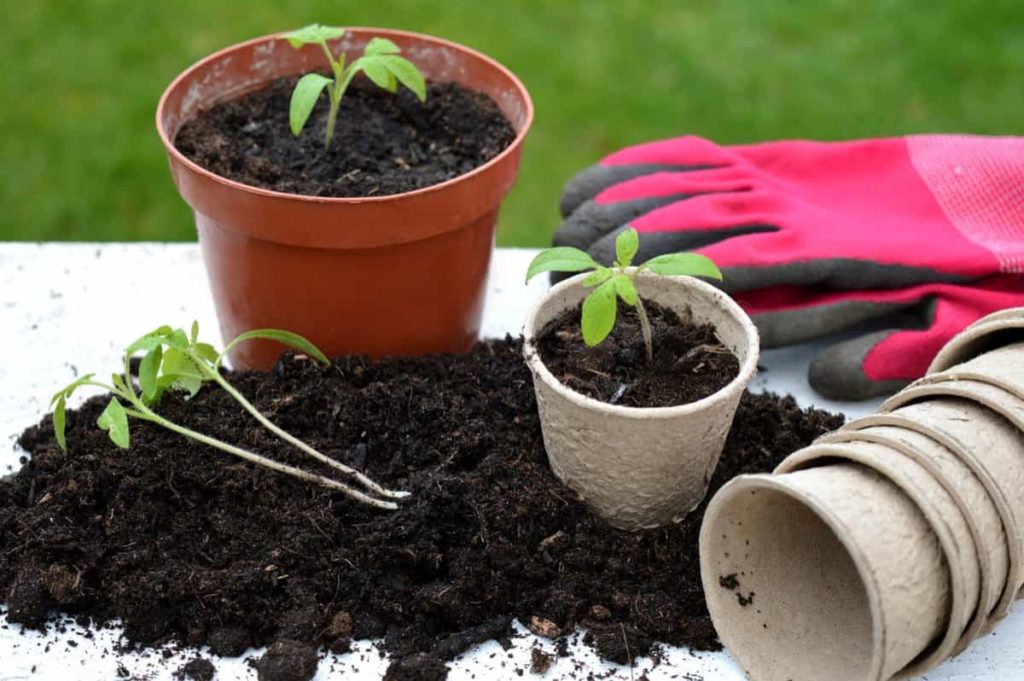
If you are busy and are concerned that you can forget to water your plants, this is a fantastic suggestion. When you are planting, be sure to leave a space of approximately two inches at the top of the container so that it can retain water. If there isn’t enough room around the plant’s roots, water won’t be able to penetrate the soil and reach the plant’s roots.
Pick your container plants
Choose plants that have comparable requirements for growth. For instance, cultivars that thrive in direct sunlight should be grouped. Begin with high-quality plants to get the finest outcomes. Because of Canada’s short growing season, poor-quality plants rarely recover. Growers in greenhouses take a great deal of effort into cultivating plants that can survive in our weather conditions.
When selecting a transplant, it is important to inspect the roots to ensure that the bulk of the roots is currently expanding and developing. The color of active roots is white, but the color of aged roots is dark or even a blackish brown. A current trend in landscaping is to utilize only plants with leaves and provide texture with perennials, grasses, and other types of plants. In addition, there has been a recent trend among homeowners to start perennials in their containers, to move them into their yards in the autumn.
Consider color combinations if possible
Taking into consideration the location of your garden can assist you in deciding which color combinations would look amazing there. There are several reasons why you may wish to match the color of your house, enhance a feature in your garden, or portray a certain style. If you want your arrangement to have a basic but attractive look, use flowers and foliage with colors quite close to one another. Choose colors that are visually opposed to one another, such as orange and purple or yellow and blue, to provide a more dramatic impression.
Start planting your container plants
Lightweight materials like broken terra-cotta pot pieces can be used to fill the bottom of tall pots with shallow-rooted plants. As a result, drainage is improved, and soggy soil is avoided. Make sure each plant has a depth of 1 to 2 inches below the pot’s lip before planting, starting with the biggest pot and working your way outwards, scooping and filling as necessary.
Water your container plants
Compared to the rest of your garden, the plants contained inside containers will need more frequent watering. This almost certainly necessitates regularly watering, and it is especially important to do so during extreme heat and dry locations. Continue to do so until you see water escaping through the drainage holes at each subsequent watering.
This is the moment to stop before the earth gets wet or the water is left standing, but it also guarantees that you will have a lot to drink. Self-watering containers are an absolute need for anybody who cannot commit to watering their plants every day. These containers include a reservoir in the base that can hold enough water to keep your plants wet for many days.
Fertilizer requirements for your containers
Each time you water your potted plant, nutrients will be leached out of the soil. Therefore, you will need to fertilize it constantly. For most plants, all-purpose fertilizer beads that release nutrients gradually over time are beneficial; nevertheless, you should check the plant tags for any additional instructions.
There are no hard-and-fast rules to follow when fertilizing container plants. The amount of fertilizer to apply and how often should be determined based on several parameters, including the kind of plants being grown, the development stage of each plant, the type of fertilizer being used, and the manner of watering.
Growing vegetables in containers in Canada
Lettuce: Lettuce flourishes in Canada’s spring and autumn. This plant can thrive in snow or frost, unlike other veggies. Lettuce is an easy-to-grow vegetable. It doesn’t require fertilizer, simply once-a-week watering, and any soil will work. Lettuce is great for urban and small-space gardening and great for containers.
In case you missed it: Oklahoma Container Gardening: Beginner’s Guide for Vegetables, Fruits, Herbs, and Flowers
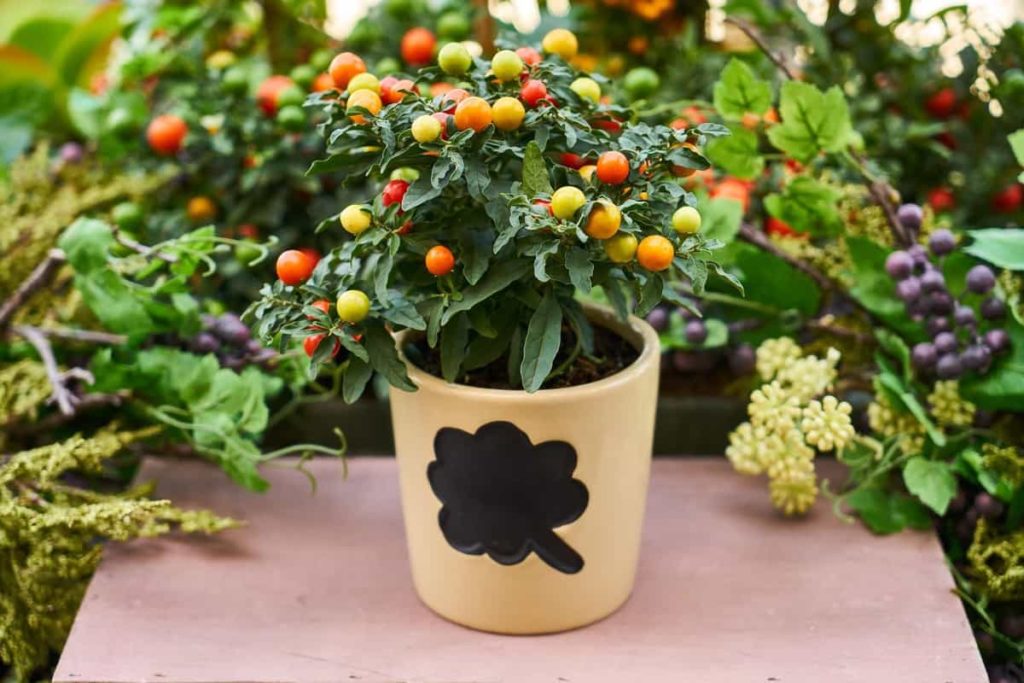
Kale: The sole decorative plant on this list is kale. Adding color, charm, and beauty to any garden, Kale can be grown in pots in Canada. This adaptable veggie is great for Canadian beginners.
Tomatoes: Tomatoes continue to grow in size and quantity when the weather warms up in the summer. Vegetables don’t get much easier than this. These are easy to cultivate in a container.
Peppers: These heat-loving veggies are low-maintenance. Summer heat helps them. Longer summer means more peppers. Peppers grow well in northern and southern Canadian gardens. These work well in Canadian containers.
Radishes: Most radishes mature in 25 to 30 days after planting. Small but not microscopic seeds can be planted easily. Radishes thrive in cold regions and can be planted when the soil is workable.
Growing fruits in containers in Canada
Strawberries: Strawberry is a great potted fruit. Strawberry containers are simple to cultivate, don’t need huge pots or space, and can be grown on a patio or balcony. Winter strawberries can be grown in warmer areas.
In case you missed it: Easy Plants to Grow at Home in USA: For Containers, Backyard, Patio, and Indoors

Apples: Apple trees love Canada’s spring and fall. Flowers and fruit can grow amid late-spring snow or frost. It needs no fertilizer, water, soil, or pruning. If you have limited room, grow apple trees in pots. They grow in all Canadian climates and soils.
Pears: Pears are another cold-hardy Canadian fruit. Pear Trees are cold-hardy, drought-resistant, and heat- and humidity-tolerant. It can be planted anyplace in your yard, regardless of sunlight. Pear Trees can be cultivated in pots in Canada. This adaptable fruit is excellent for Canadian beginners.
Plums: Unlike other fruit trees, plums prefer heat. Plum trees are insect- and disease-resistant, making them perfect for Canada. Plum trees are 8-10 feet tall and 6-8 feet wide.
Figs: Only the fig tree is pest-resistant on this list. Most gardeners plant fig trees in pots and move them inside after the first frost. After planting a fig tree, you’re done. You don’t need to bother about insects, disease, or pruning to grow figs.
Growing flowers in containers in Canada
Petunias: Petunias bloom till early November but thrive in the heat. Hotter weather means more flowers. Flowers need care. They bloom without deadheading. Pots are ideal for these flowers.
In case you missed it: Florida Container Gardening: For Vegetables, Herbs, Flowers, and Fruits
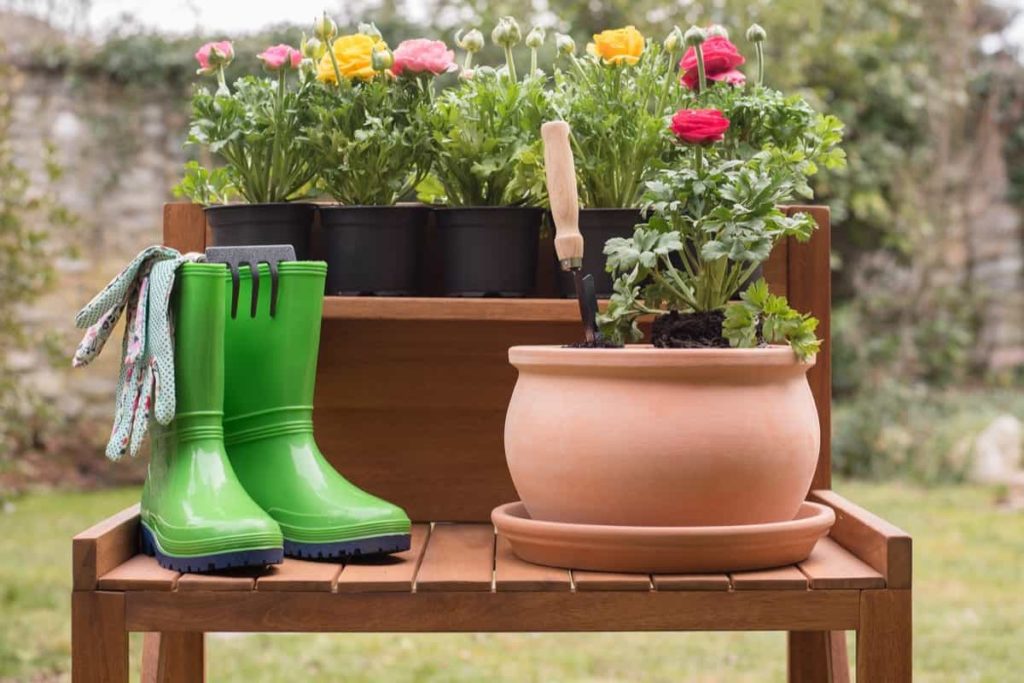
Daisies: Plant Bulbs in autumn and spring to grow these flowers. Daisies love heat and light, making them perfect container flowers.
Dahlias: Dahlias grow easily. Never fertilize, hardly water, plant in any soil, and never worry about it! Ideal for pots.
Zinnias: While planting your Zinnias in the spring will give them a head start, Zinnias can be planted in the early summer and will still bloom and flourish. Zinnias are the simplest seed-grown flower. Winter germination needs less sunshine, water, and care. These are pot-friendly.
Tulips: It adds color everywhere—best for containers in Canada. Tulips can withstand chilly winters. However, late spring frosts and chilly springs can damage tulips.
Growing herbs in containers in Canada
Basil: Basil becomes more delicious as summers get warmer. This is one of the low-maintenance herbs. Basil is easy to grow. It doesn’t require fertilizer and can be grown in any soil. It is ideal for pots.
In case you missed it: California Container Gardening: For Vegetables, Flowers, Herbs, and Fruits
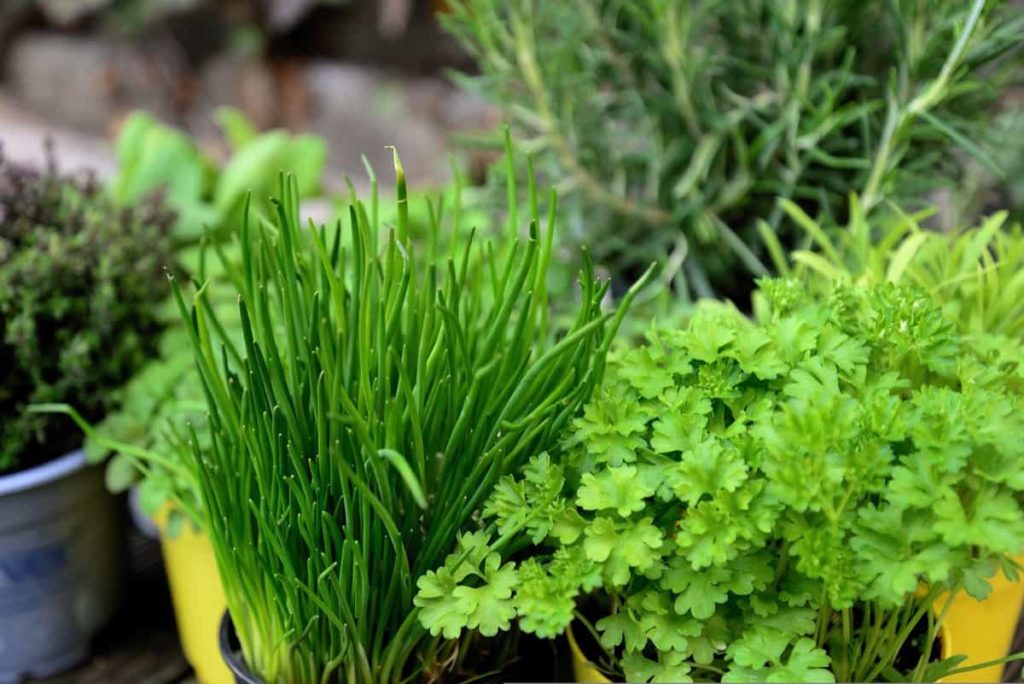
Oregano: In Canada, oregano is the most tolerant of the cold. Oregano can be cultivated year-round, unlike the others. Extreme heat doesn’t harm plants, but It will affect taste and longevity.
Mint: Mint thrives in Canada’s chilly winters. Winter and early spring provide the best peas. Mint grows easily. It doesn’t require fertilizer, little water, soil, or pruning. Mint thrives in pots.
Sage: Sage thrives as the summer months go. Low-maintenance herbs abound. Herbs like sage, particularly the non-garden varieties, are prone to diseases. Spring and summer are your herb’s most sensitive seasons. You can grow them in containers.
Chamomile: Chamomile needs just the rain to survive. It’s the ultimate Canadian herb. Chamomile is a perennial plant, which is beneficial. However, frost kills chamomile like other perennial plants. This plant grows from late spring through early fall.
- Broccoli Seed Germination and Selection
- Asparagus Seed Germination and Variety Selection
- Seasonal Flower Gardening: Best Practices for Spring, Summer, Fall, and Winter
- How to Grow Hibiscus from Flower
- Plantation Ideas for Home Decoration: A Beginners Guide
- Flower Garden Designs and Layouts for Beginners
- Planting and Spacing Techniques in Papaya: A Beginner’s Guide
- Growing Gold: Essential Techniques for Planting Pineapples
- How to Make Kalanchoe Plant Bushy: Home Remedies and Solutions
- 11 Reasons Why Your Gardenia is Not Blooming: Home Remedies and Solutions
- Eco Elegance: The Guide to Designing a Drought-Tolerant Landscape
- Gardening on a Slope: Strategies for Hillside Landscaping
- Nourish and Flourish: Top Organic Mulches for Thriving House Plants
- Everything You Want to Know about Indian Mogra Flower: Discover Uses and Growing
- Green Thumb Success: Expert Tips for Cultivating Greenhouse Pumpkins All Year Round
- Maximize Growth & Flavor: The Ultimate Guide to Companion Planting in Herb Gardens
- How to Control Rhododendron Problems Naturally: Home Remedies and Organic Ways to Fix Them
- Natural Magic: The Remarkable Benefits of Cinnamon for Plants
- Best Steps to Revive Dying Tulip with Natural and Organic Treatment
- 10 Reasons Why Your Angel Trumpet is Not Blooming: Remedies and Treatment
- How to Fix Periwinkle Leaf and Flower-Related Problems: Natural Remedies and Solutions
- How to Fix Zinnias Leaf and Flower Problems: Discover Natural and Home Remedies
- Organic Steps to Induce Lemon Tree Flowers: A Comprehensive Guide
- Bloom Booster: Crafting the Perfect Homemade Bougainvillea Fertilizer
- Optimizing Growth: A Guide to Applying NPK Fertilizer for Potted Plants
- 10 Best Homemade Fertilizers for Rubber Plant: DIY Recipes and Application Method
- How to Boost Female Pumpkin Flowers: Effective Steps for More Flowers and High Yields
- Transform Your Indoor Garden: Top Benefits of Pink Salt for Houseplants
- 10 Best Homemade Fertilizers for Peacock Plants (Calathea): Easy DIY Guide
- Unlock Blooms: 9 Reasons Why Your Potted Chrysanthemum is Not Blooming
- 8 Reasons Why Your Potted Hibiscus is Not Blooming: Fix it with Simple Solutions
- Unlock Blooms: 9 Key Reasons Your Potted Frangipani Won’t Flower
- 10 Reasons Why Is My Ice Plant Not Blooming: Remedies and Treatment
- 10 Reasons Why My Potted Hydrangea Not Blooming: Treatment and Remedies
- 10 Reasons Why is My Wisteria Not Blooming: Remedies and Treatment
- 10 Reasons Why is My Goldfish Plant Not Blooming: Remedies and Treatment